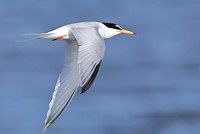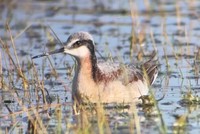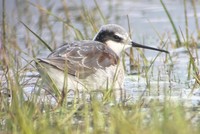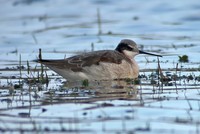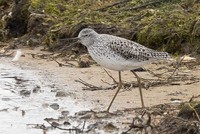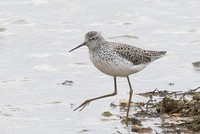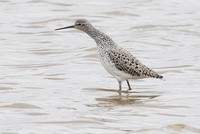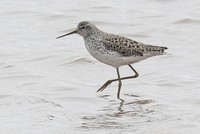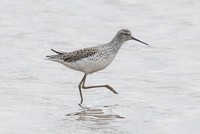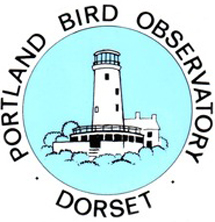Weekly round-up: 22 - 28 October 2014
There’s no question. There’s no doubt about it. This week has to be all about the fall-out of ex-Hurricane Gonzalo.
The end of the week last week saw a mass of seabirds swept up and deposited across the western coasts of Britain and Ireland as a deep low pressure hurried across the country. The first couple of days of this week saw conditions settle, the associated fronts and weather systems ripple a little and then calm down.
And after the ripples and the calming down ~ out of the sky fell a supreme array of rather old fashioned, almost unfashionable rarities ~ more synonymous with the halcyon days of scouring the valleys of west Cornwall for a cheeky rare or skiving off school to spend a non half-term week on Scilly, with hope and expectation well to the fore.
Yes, it was an exciting procession of megas spread across three days, which culminated in no less than five genuinely great birds being unearthed on a busy, busy day for the guys at RBA HQ who were disseminating all the news on a day that what we should perhaps rename “Gonzalo’s Thursday”.
Sometimes, when you’re sitting at the computer screen wondering how just how to make things interesting for another week. There are occasional flights of fancy that come in to the mind and set off a train of thought, often concerned wholly with the dewey-eyed romanticism and rose-tinted spectacles of the twitching days of yore when rare birds were, well, rare. And appreciated as such too.
The “Uber-Megas” of the modern day have almost overloaded the collective brain and more and more is expected of each spring, summer, autumn and winter as the calendar heads closer to the 2020’s. Things ain’t what they used to be and some of those belting birds from 20 or 30 years ago are almost sneered at. Even those that are ticks for that brand new generation of ultra-listers seem to get a bit of low-key fanfare to some (not all though, some embrace them for all their worth…).
…well now, hot on the heels of the waffling account that concluded last week’s review, which included happy reminiscences of a remarkable day on Scilly in October 1985 that saw the appearance of both species of vagrant North American cuckoos ~ we have another October day that has pulled off the same remarkable feat.
Despite the fact that the two birds found on October 23rd 2014 were separated by some 700 miles (give or take), rather than the mile or so for the Scilly duo, the thoughts expressed on these very pages last week that …those two Cuckoos would cause a hullabaloo in the next week, especially given the enormo-tick status acquired by the generally sickly Black-billed … are particularly prescient (and that’s before we get to the extra smart-arsery of predicting a Catharus thrush or two as well…).
So. Let’s get stuck in to a wonderfully old school set of outstanding rares…
Wow. Wow. Wow.
No sooner had one rare cuckoo rocked up in the far southwest (more on that in a mo of course), then up popped the one that everybody wasn’t really expecting ~ the hugely rare and massively unpredictable Black-billed Cuckoo.
The bird was found on North Ronaldsay around noon on 23rd, being seen briefly in the garden of Holland House, before heading off west ~ with sadly, almost inevitably, no further sign.
Where this week’s North Ron., bird ended up is a tough one to call but searchers may have been advised to have their heads looking down in the grass for a fresh corpse as well as up in to any trees for a healthy, branch-bounding BB Coccyzus. That said, it headed away of its own volition, so maybe it was hail and hearty after all…
…and of course, if you haven’t done so already, check out the hugely entertaining and rather exciting tale of a memorable Orkney day from the NRBO’s Mark Warren here
There’s been an almighty gap between the two most recent records of this oft moribund species ~ 24 years and 13 days (to be exact) separating this new bird for Orkney and the last British record, seen near Watermill on St. Mary’s on October 10th 1990.
The overall tally now goes to 14 (15 if you include an oilfield “at sea” record) and the spread of records is thus: Britain’s first Black-billed Cuckoo was killed in County Antrim in 1871 with a gap of 61 years until the next record, Scilly’s first found dead after flying in to a wall on Tresco at the end of October 1932. Two birds were recorded in the ‘50’s, on Kintyre (Argyll & Bute) for three days in November 1950 (found dead) and on Foula (Shetland) in October 1953 (this one was picked up exhausted and died).
Cornwall and Devon landed county firsts in the 60’s, “moribund” at Gweek in October 1965 and, in October 1967 one was found on Lundy on the 19th only to be picked up dead the following day.
Cleveland secured the only record for the 1970’s, a two day bird at Redcar on September 23rd-24th 1975 while the year for the species to date was 1982 ~ four birds found between August 29th and October 30th, with two on Scilly ~ one on St. Agnes on August 29th and one in Hugh Town, St. Mary’s on October 21st-23rd (both birds picked up dead) ~ one caught in Barnstaple (Devon) on October 21st with the fourth one in this still historic year appearing on the Wirral, at Red Rocks on October 30th.
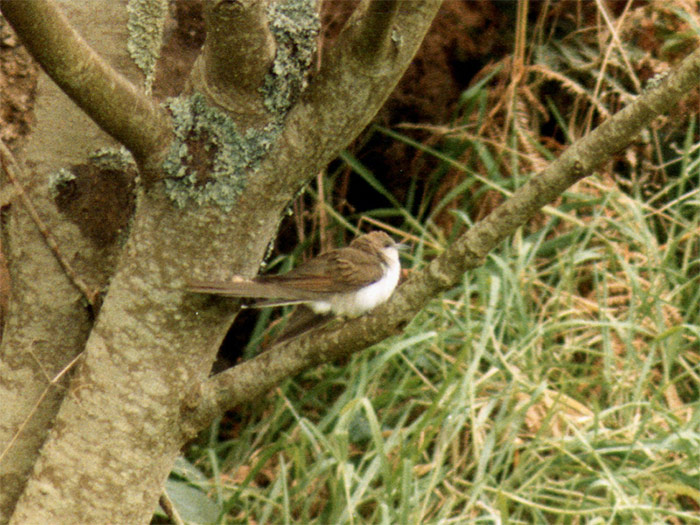
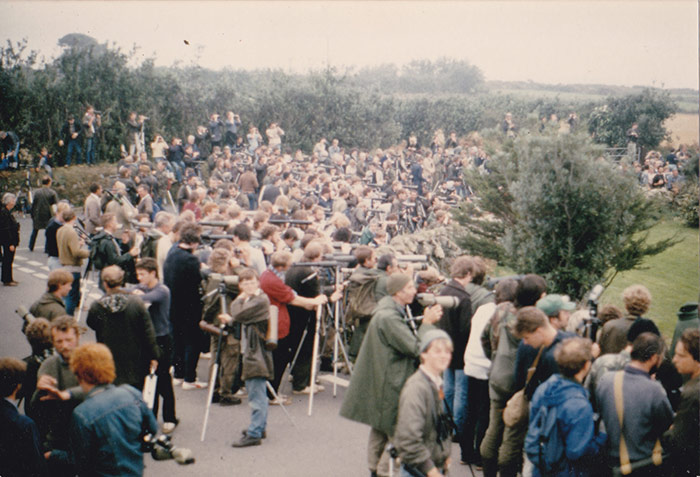
The mid-80’s was perhaps the time when the Isles of Scilly were way ahead of anywhere else in terms of the quality of rarity found and the numbers of birders present especially around the main island, St. Mary’s. The magisterial pomp of the islands over all other locations was, at the time, something to behold and this image encapsulates the Scilly Experience to a tee. Taken on October 12th 1985, this was the crowd that gathered, during the middle of the afternoon around the Sunken Garden to pay homage to a wayward Black-billed Cuckoo. The exuberant joy of that remarkable day (two American cuckoos and a Rose-breasted Grosbeak within just a few hours) is almost impossible to convey unless you were there ~ the massed ranks of birders celebrated in the only way we knew at the time…drinking too much in the Bishop by way of celebration, sticking a raft of coins along the pool table just inside the door as the “winner stays on” rule applied before heading down to the Porthcressa for the Saturday disco ~ an almost entirely all male affair synonymous with everyone drinking some more before dancing the night away until the wee small hours, some killer tunes coming off the decks (yep, Martha and the Muffins has been mentioned elsewhere this week!)…with Martin Hunt’s typical “Grand Finale” of Lynyrd Skynryd’s “Freebird” oozing from the speakers in a bizarre, last dance, mass birding huddle-come-ritual to see us home. To the new generation it may all seem rather curios and strange and certainly outdated ~ but you don’t know what you were missing…days like that were the heart and soul of birding, days that are now, long gone.
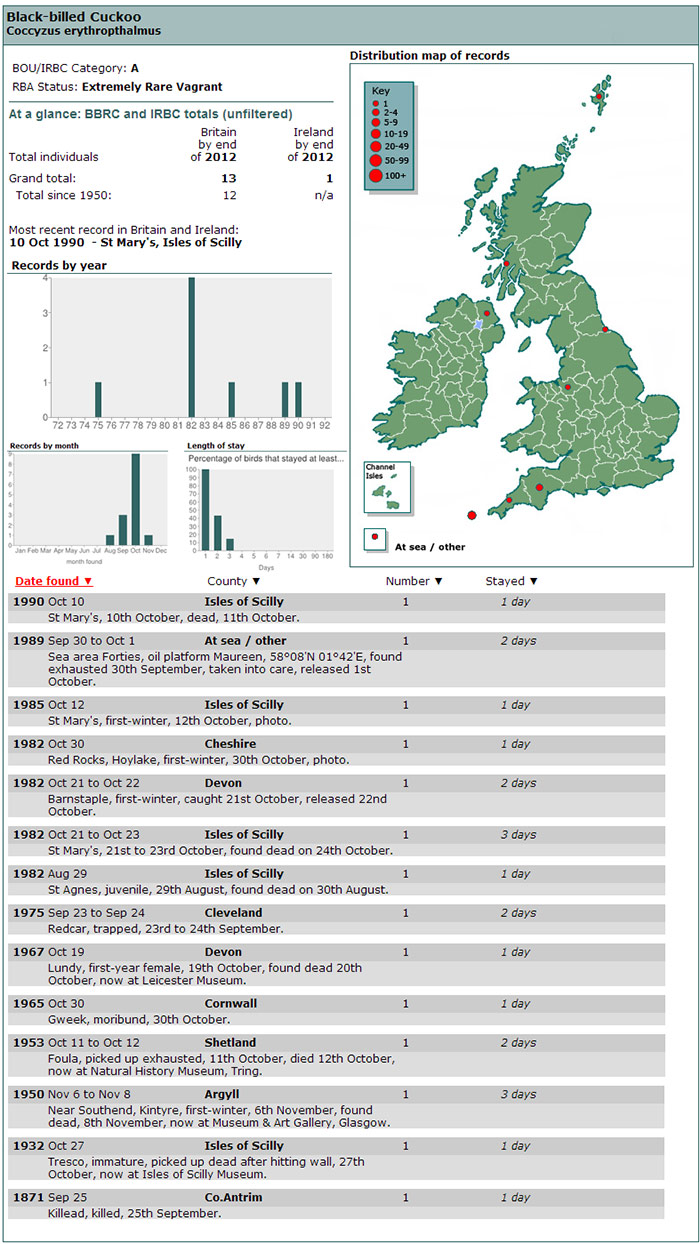
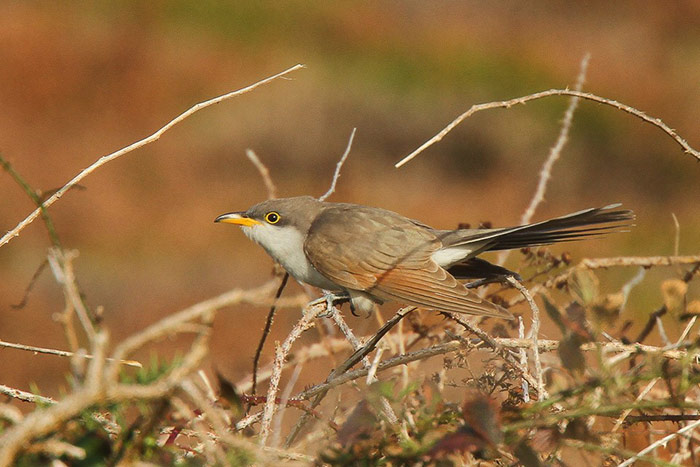
Rather less susceptible to the vagaries of an epic Trans-Atlantic crossing and five times more “common” is the rather more robust Yellow-billed Cuckoo.

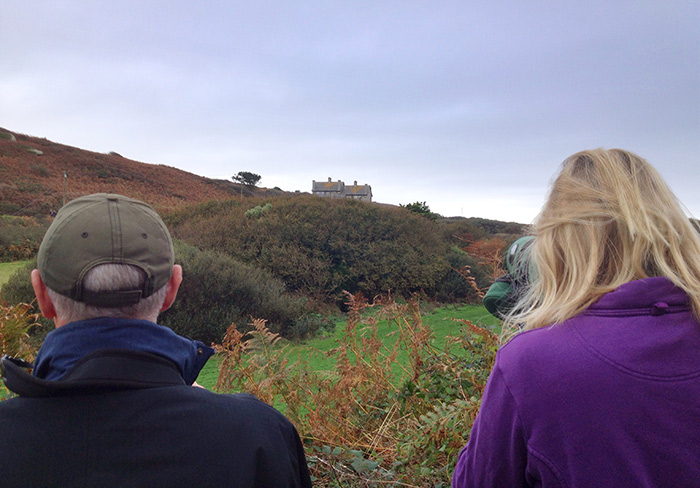
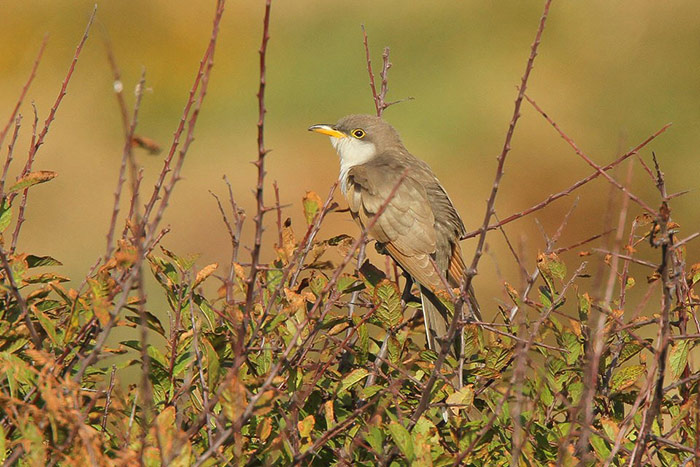
Neither species has been frequent in recent times and, less than an hour before the Black-billed Cuckoo news was known of ~ on the bonkers day of October 23rd ~ a birder investigating a weird noise by the toilet block (now stop it, puuuurleeeeeeeeease) at Porthgwarra swiftly discovered the first twitchable mainland Yellow-billed Cuckoo since a two-day bird at nearby St. Levan on October 12th-13th 2000. Good work!
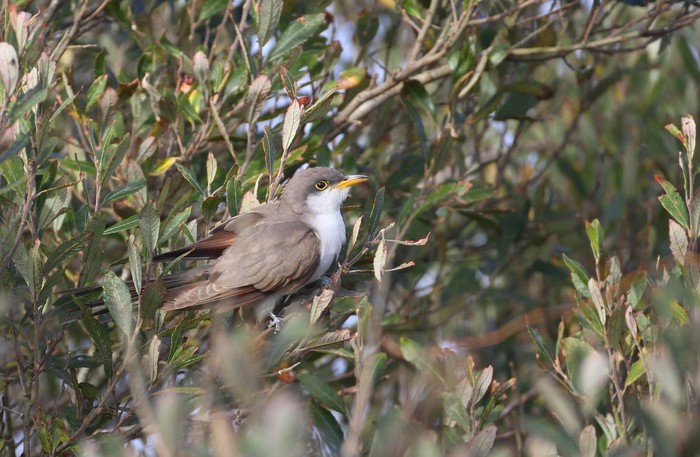
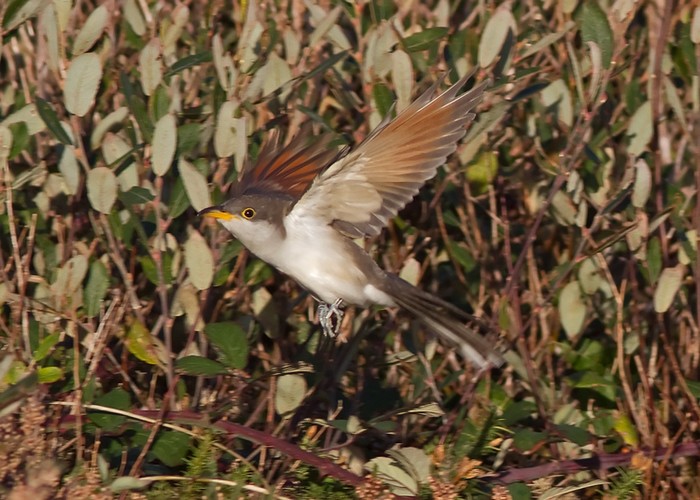
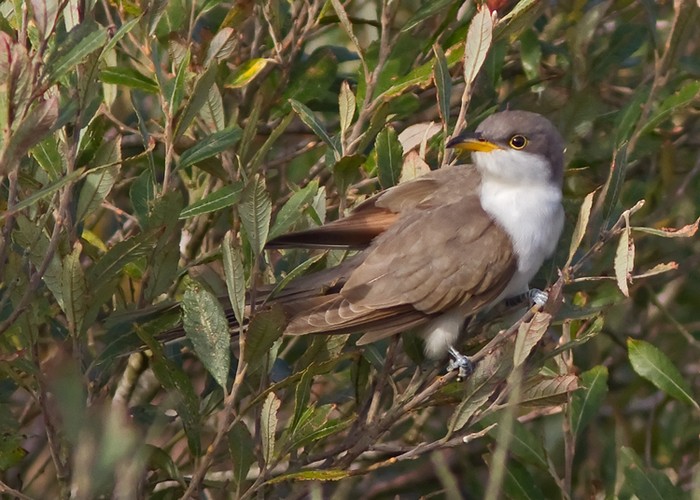
The bird remained in this most famous of Cornish valleys throughout the rest of the day and the quick dissemination of news ensured that anyone within a four-hour catchment area of the far southwest had a chance to connect…it remained in place to 24th and, keeping that old school vibe flowing nicely, it did an old-fashioned Friday night flit too.
On paper, there are at least three other species amongst the Headliners this week that are way rarer, but they’ve all been “on offer” in the short to mid-term, quite unlike Yellow-billed Cuckoo.
The history books show 71 records to date, exceptionally well spread from Scilly to Shetland and from the far west of Wales to the eastern tip of East Anglia as well as the “top” and “bottom” of Ireland. Prior to the PG bird, there have been seven birds since the start of the millennium but there have been few that people could reach…Scilly has 10 records of 13 birds to date ~ easily the top location for the species ~ with that classic “Scilly Autumn” of October 1985 seeing an amazing four (minimum) arrive between October 12th and 23rd, with the most recent occurrence there coming in October 2004. Cornwall now boasts nine records (all singles) including two in consecutive years, October 1999 and 2000.
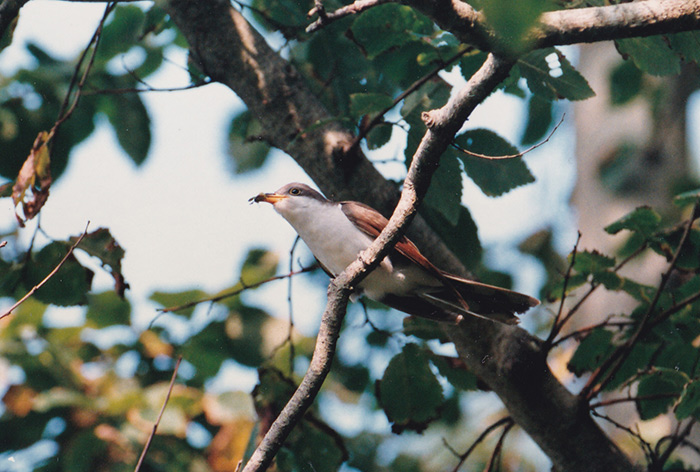
Devon, Hampshire and Orkney have an even share of a dozen birds, the latter location hosting a bird that was seen by a few listers as the headed home after a successful twitch for the Sandhill Crane in September 2009.
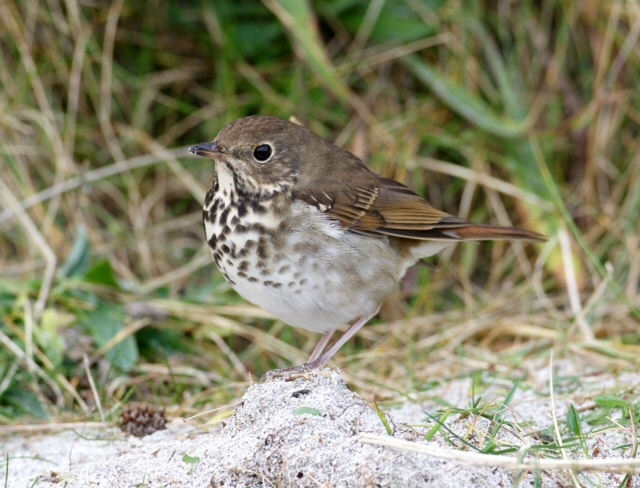
Starting the Nearctic ball rolling in the firmest of fashion this week was the obliging first-winter Hermit Thrush that was found around the Balranald RSPB reserve on North Uist (Outer Hebrides) on 22nd ~ the first of three super “US” birds found around the island group during a 24 hour period.
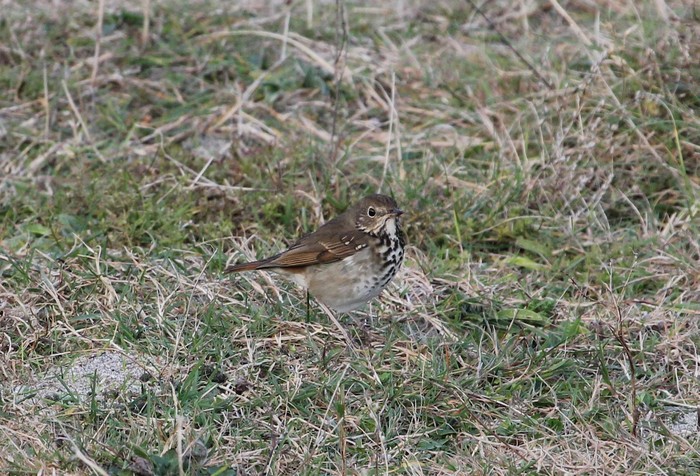
The North Uist bird, still present on 23rd, becomes the third record for the Outer Hebrides ~ the first two of which were found within 24 hours of each other across October 9th-10th 2010, one appearing on Barra, the other on South Uist ~ the second of 2014(after the four day mid-May bird on Fair Isle) and the 13th record for Britain and Ireland.
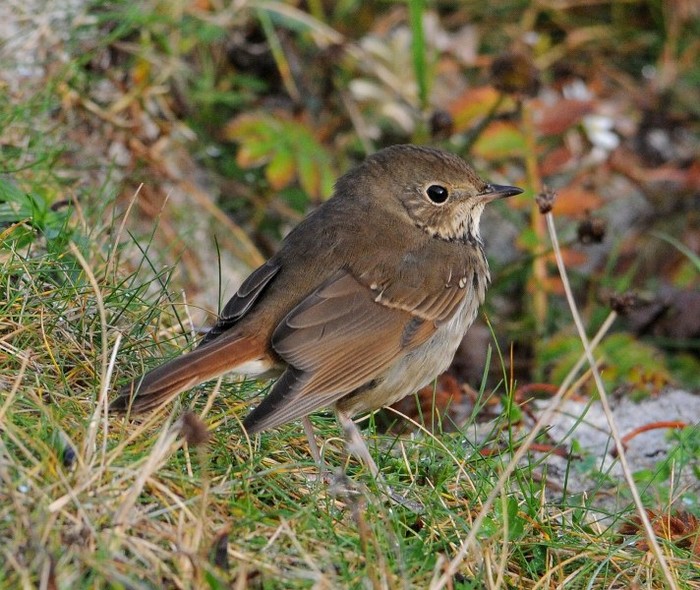
Hermit Thrush was, until recently, a highly-prized vagrant but the past eight years have seen six birds appear here ~ albeit five of them being on islands with assorted degrees of trickiness to get to ~ but last year’s bird (another one found loitering around the Porthgwarra toilets) enabled many birders a chance to make a significantly easier mainland jaunt to enjoy this perky little thrush.
This week’s bird puts the Outer Hebrides on a level-footing with Scilly ~ three birds each ~ while Shetland leads by one (as well as the already mentioned Fair Isle from this spring, there are two more records from the same island, including Britain’s first in June 1975, and one for Fetlar ~ in April 1998).
The only other birds, and the only ones for Ireland, were both found in Cork, at Galley Head in October 1998 and a well-twitched bird on Cape Clear Island in October 2006.
We’re on to another species that is half as rare as the one that follows, but we’re in “double” family mode, so two Cuckoos really should be followed by two Thrushes ~ and in this instance, we’re on to no fewer than three more Thrushes…(ummm, I think I’ve confused myself with all that…).
Whatever the rarity-induced confusion may be in my head, we’ll leave that to one side and move on to the impressive double appearance of Grey-cheeked Thrushes on the Scottish islands with the Outer Hebrides and Orkney group scoring within the space of a few autumnal hours of the remarkable October 23rd.
The first Grey-cheeked Thrush of the day was found on the football pitch on Barra and was followed, as dusk fell, by birders still searching for the Black-billed Cuckoo on North Ronaldsay!
These two birds, the third for Orkney and the fourth for the Hebrides and will be the 67th and 68th records for Britain and Ireland ~ previous acceptances for the Outer Hebrides coming on St. Kilda on October 29th 1965 and on Benbecula on October 29th 1989 (cue Stewie Griffin-like squeal of delight and clapping of hands…) ~ along with one last year, also on Barra on October 10th ~ while the previous acceptances for Orkney were birds on North Hoy on October 16th 1994 and Stromness, Mainland on October 16th 2001.
Joining the party early on 24th was the third Grey-cheeked Thrush within less than 24 hours, this one popping up, rather handily, by the Bird Observatory on Fair Isle, the fifth for the island (which includes Britain’s first, in October 1953), the second there in the last 12 months (one seen near the school for a day last October) and the eighth for Shetland overall.
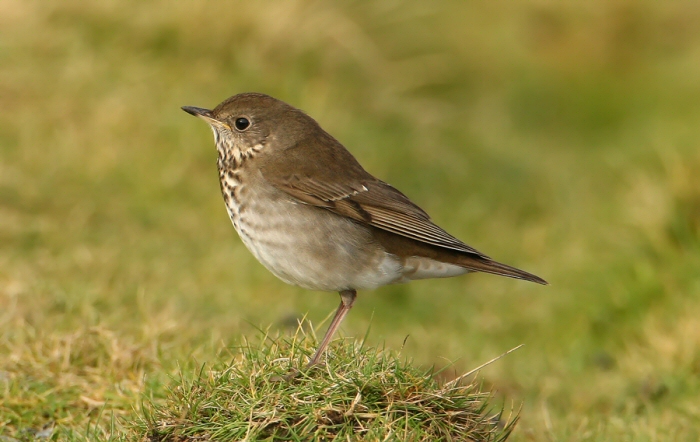
Multiple arrival of Grey-cheeked Thrushes isn’t unheard of here but it seems unlikely that these two birds will be able to match the much-talked about influx of a dozen birds between October 20th-27th 1986 when one arrived in Devon (on Lundy), three appeared in Cornwall (at Bosrigan Castle, Cot Valley and Porthgwarra) with up to eight on Scilly ~ one of which was actually Britain’s first record (there’ve been just two) of the long-forgotten Bicknell’s Thrush…
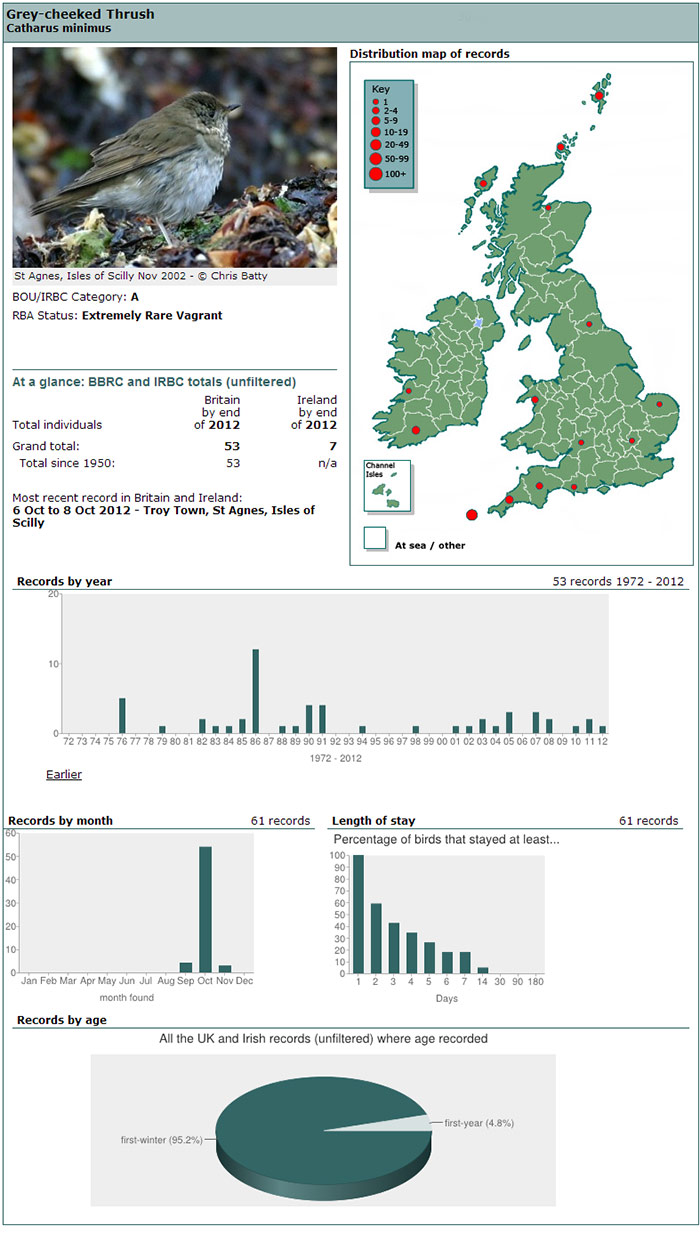
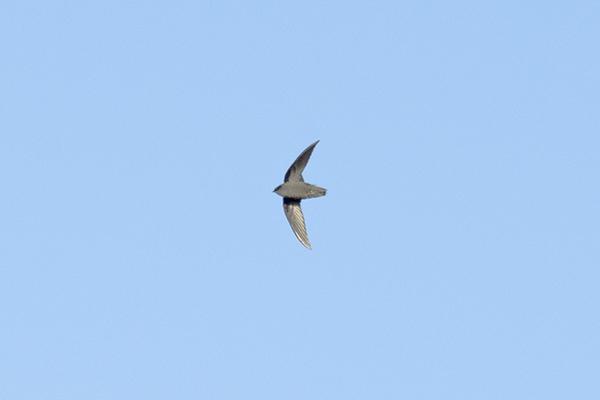
Sneaking up on the inside as the bonzer 23rd drew to a close was yet more news of another top drawer rarity on the Outer Hebrides ~ a species which (to my surprise at least) hadn’t been recorded anywhere in Britain and Ireland for a full nine years…
The species in question? Chimney Swift and this week’s bird (the first of many?) was found over the north end of the Butt of Lewis during the middle of the morning, reappearing later in the day over Loch Stiapabhat ~ becoming a first for the islands in the process, reappearing over Port Nis the following day and showing occasionally through to late afternoon. There was a repeat performance (of sorts on 25th too).
Here’s more on the find and identification from Lewis resident, Tony Marr…

At about 1030 on the morning of 23rd, Nick Davis watched and photographed an all-dark swift by the lighthouse at the Butt of Lewis and he mentioned it to me when I joined him on site at around 1230, but sadly there was no sign of the bird. After the tail-end of Hurricane Gonzalo had reached us on Tuesday (22nd), a Common or Pallid seemed unlikely but one never knows. I walked the cliffs all afternoon but no swift.
At around 1715, Nick and I were looking through a flock of Golden Plover in case an American had dropped in, when a swift flew over our heads! The bird was small and sooty-grey swift, with a typically stocky body and a short square-ended tail. Its shape and flight reminded me of a Little Swift but without the white rump. If you should have any doubts about the id, please enlarge the image and you will see three or more spines projecting along the tip of the tail. Nick did very well to capture such a fast-flying bird – an excellent christening for his new camera!
We were standing outside The Decca, the B&B where Nick was staying and it circled the house a few times before moving off. It then reappeared several times in the following 40 minutes, flying around the house and obviously looking for somewhere to roost. It flew up under the eaves on two occasions, but there was little space for it and at dusk, when I left, I checked all round the house and could not find it. However, there are other buildings in the area where it might have been more successful.
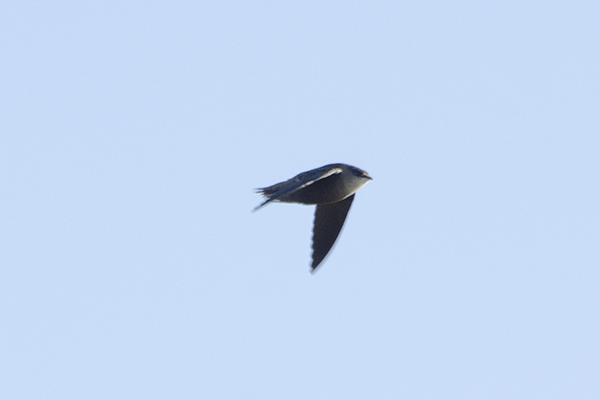
Chimney Swift has some 31 accepted records on the books, with two years in particular figuring heavily amongst those “thumbs-up” birds.
1999 was the first of the two “irruptive years” to date ~ with 11 records of 12 birds occurring between October 22nd-30th, initially being confined to the far southwest of England (Scilly, Cornwall and Devon) before Ireland cleaned up the following seven (in Wexford, Wicklow and Cork).
The second “big year” was the last one in which these “avian flying cigars” have reached our collective shores ~ 2005 ~ a year which saw 13 records of 17 birds noted. The influx began with three in Cork, two over Sherkin Island and one on Cape Clear, on October 29th ~ and was followed by three more records in the county, including up to four near Courtmacsherry between October 31st and November 4th. Cheshire, Anglesey, Northumberland and East Yorkshire benefitted with first county records during the mass arrival, which concluded with a bird in Kerry on November 9th.
Once you take these two years out of the equation, Chimney Swift becomes an extremely rare bird ~ just five occurrences (relating to six birds) preceded the first invasion year, starting with Britain’s first, the famous birds found at Porthgwarra (yep, that same site again…!) on October 21st 1982 with two present from 23rd to 27th.
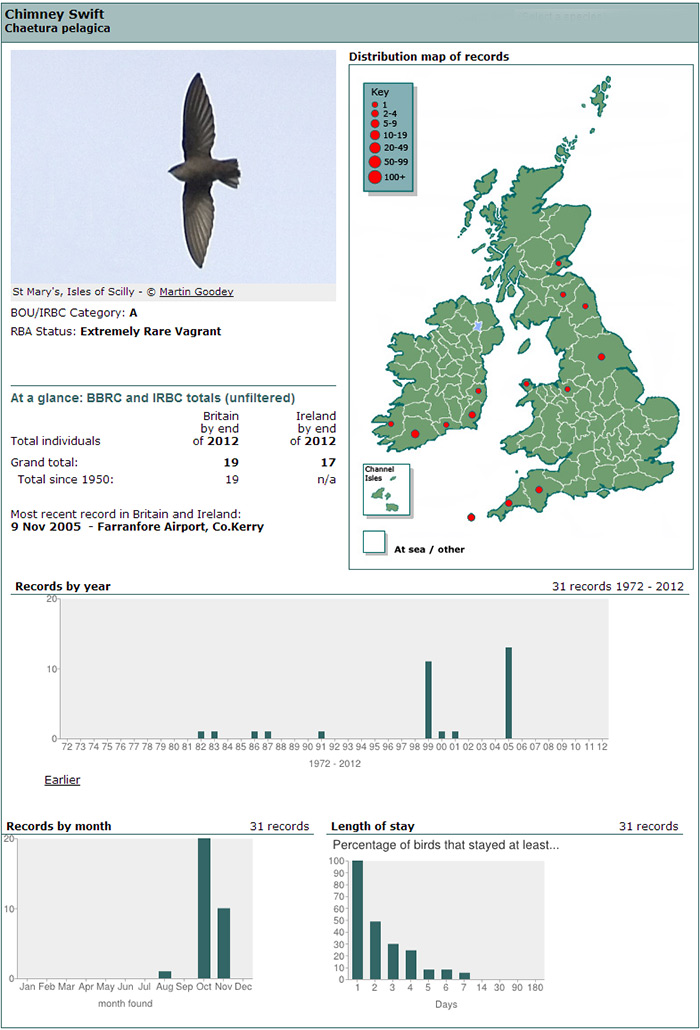
Not enjoying the best of luck was a storm-blown Wilson’s Storm-petrels that appeared in the waters of Argyll & Bute, just northwest of Tayinloan at the Gigha ferry jetty on 24th ~ a bird swiftly despatched by the local laridae brigade.
WILSON'S PETREL Gigha ferry jetty, Tayinloan, Argyll. Caught by Herring Gull and eaten by Great Black-back Gull @RareBirdAlertUK #wrecked
— Dan Brown (@DanBrown81) October 24, 2014This lost oceanic waif has been recorded once previously in Argyll, “found alive” on Jura on October 1st 1891 ~ so this is a huge bird within northwest Scotland and the nation as a whole ~ prior to removal from the Rarities List in 2005, the Jura bird was one of just three for Scotland, the other two records coming from the Outer Hebrides, in the Little Minch, off Harris, in August 1988 and off Labost, Lewis on August 3rd 2005 (another was reported from the Minch in 2004 but appears to not have made it on to the official record).
A breezy start to the week saw several low single figure numbers of Leach’s Storm-petrels recorded, almost all confined (typically) to the northwest coast of England. At least 10 birds were logged around Cheshire and the Wirral (from Leasowe, Hoylake, New Brighton and Hilbre Island), with three singles in north Wales (off the coasts of Anglesey, Gwynedd and Ceredigion), whilst two passed Ardvule Point, South Uist (Outer Hebrides) with one off the Lancashire coast too (seen at Rossall Point), with the only bird on the east coast noted passing Winterton (Norfolk).
Further birds followed through the week, totalling another 14 in all, including four off Galway’s Mutton Island on 25th and 27th, with two at nearby Silver Strand the same day, two off Walney Island (Cumbria) on 23rd, two singles off Saltcoats (Ayrshire) over the weekend with another for Ardvule and one also for Spurn (East Yorkshire). Two singles then passed Powillimount (Dumfries & Galloway) on 27th.
Birding surveyors on board the R.V. Celtic Explorer recorded a lone Great Shearwater some six miles south of Roche’s Point (Co. Cork) on 24th with the same county securing the only other bird of the week, heading past Galley Head on 26th.
After those super numbers of Balearic Shearwaters recorded amongst the first part of the fallout from the storm created by the tail end of Hurricane Gonzalo, things tailed off considerably through the past seven days but there were a few modest double figure totals to report.
Off the west Cornish coast, 36 were counted on 23rd, with 13 from Berry head and 10 off Lundy Island (Devon) on 24th. The following day 16 were seen at Penberth (Cornwall) but all of the remaining 50 or so birds were all noted in the Western Approaches (from Scilly to Cork) bar one off Gibraltar Point (Lincolnshire) on 27th.
Seventeen late-ish Long-tailed Skuas were noted through the week, seven of which were noted on 22nd, including three off Flamborough Head (East Yorkshire), with singles elsewhere in North Yorkshire, Norfolk, Anglesey and Pembrokeshire. The remaining nine birds included three singles and a double off the coast of Devon and birds as far northwest as Argyll & Bute and Galway to the far west, with further birds in North Yorkshire, Suffolk and Dorset.
Around 280 Pomarine Skuas made themselves known through the week, with two surges of reports. The first was on the breezy 22nd along the east coast, when up to 20 were seen in East Yorkshire, 20 flew past Filey (North Yorkshire) and a bare minimum 40 were seen in Norfolk (including 20 from Sheringham and a day-high count of 29 off Cley ~ there’s much repetition between the two sites).
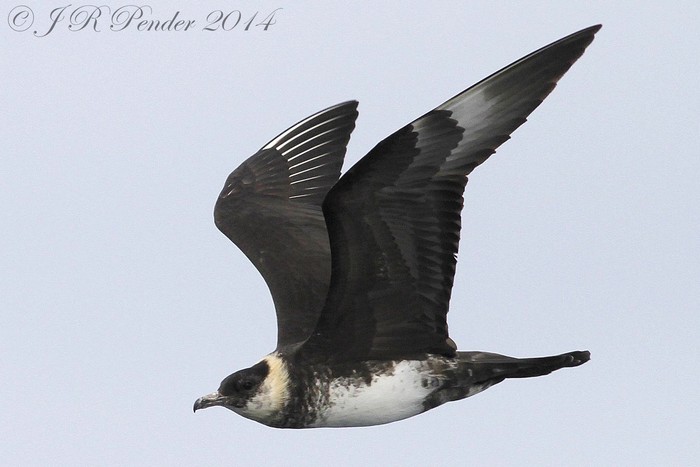
The second wave came on 26th, when at least 40 of Devon’s weekly total of around 90 birds were counted from Prawle Point and Dawlish Warren NNR (18 and 22 respectively at the two sites) with a further 20 were counted off Start Point on 27th too. At least 25 Poms were noted off the coast of Dorset through the week, while at least 23 were counted off Embo (Highland) on 23rd. In Ireland, 22 birds were reported from four counties, including 10 off Silver Strand (Co. Galway) on 25th.
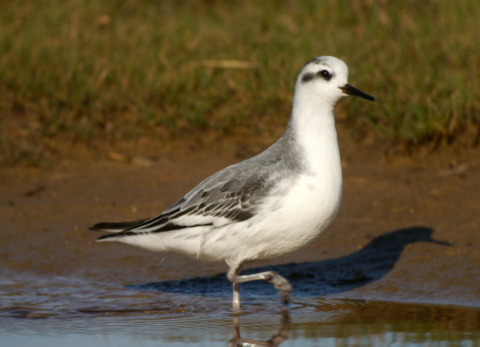
Only three Sabine’s Gull appeared on the pagers this week, a juvenile passing Point of Ayr (Flintshire) on 22nd with a second juvenile the following day further along the coast of north Wales, off Bardsey Island. The final bird of the trio was noted off Hannafore Point (Cornwall) on 27th.
Last week’s storms yielded an impressive total of Grey Phalaropes across the west coast of Britain and Ireland, but this week was rather more mundane, around 24 birds logged over seven days.
The curious, tho’ fascinating small movement past Gibraltar Point NNR saw a further four birds recorded this week, including three on 23rd. Two birds in Greater Manchester, at Heaton Park Lake on 22nd were certainly of note, as was the lingering inland bird at Pitsford Reservoir (Northamptonshire), present to 28th.
Four singles were in Norfolk ~ off Sheringham and Holme on 22nd, in Holkham Bay on 25th and Salthouse from 25th-28th ~ while a four-day first-winter at Budleigh Salterton (Devon) proved popular. Remaining singles were noted from Pendeen to North Ronaldsay and Fair Isle, along with Dorset, Kent, Suffolk, Cheshire & Wirral, Gwynedd, East Yorkshire, Cumbria, South Uist and County Galway.
Also spread far and wide were the eight single Little Auks found through the week ~ two were seen on 22nd, at Point Lynas (Anglesey) and Swalecliffe (Kent); the 23rd saw one noted from Flamborough Head (East Yorkshire); on 24th, a Little Auk was at Seahouses (Northumberland) and on 25th birds were found on North Ronaldsay (Orkney) and St. Agnes (Scilly) along with another off Thorpeness (Suffolk) with the final bird appearing back in Northumberland, seen from a boat near Inner Farne on 27th.
We’ll kick things off in all things heron-y with news of a late Purple Heron seen at The Hersey NR (Isle of Wight) on 25th ~ potentially the first record on the island since one was reported in January 2007…
Four Cattle Egrets included two along the south coast of England, still at Dungeness (Kent) to 26th and also at Pett Level (East Sussex) from 25th-28th. Wicklow’s first record for almost seven years was seen at East Coast NR, Newcastle on 24th while the now near-enough resident bird at Burton Mere Wetlands RSPB (Cheshire) remained to 26th at least.
Numbers of Great White Egrets jumped up again this week to a level which makes them ever more likely for the Review Chop…upwards of 50 recorded countrywide, with at least 13 in East Anglia (including six around Norfolk), 11 in the southeast (five for Kent and four in Essex), a minimum 10 in the northwest, with perhaps five or six in Lancashire and four or more in Cheshire. Eight Great Whites were found around the southwest of England (four for Somerset and two a piece for Devon and Dorset), with a further four in the northeast, two for both Lincolnshire and East Yorkshire. Last but not least, a single bird found at Churchtown (Co. Wexford) on 25th.
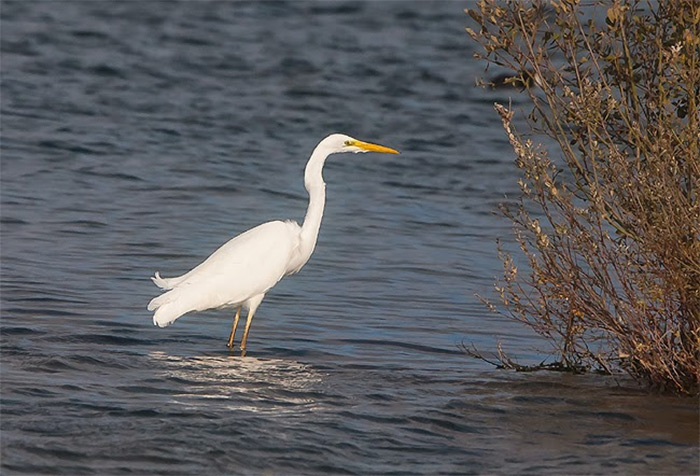
Week in, week out, one of the staples of the review, along the same lines as the above named species is Glossy Ibis but this week was one of the more Spartan of 2014 ~ only three birds reported, one of them at assorted Washes sites in Cambridgeshire (at Earith, Sutton Gault and Ouse Washes RSPB) from 22nd-25th while the lone bird at Frampton Marsh RSPB (Lincolnshire) was joined (again) by a second bird on 27th.
Dorset’s hefty cutlery collection around the Brownsea Island lagoon continued to fall ever-so-slightly short of the magical 50 mark, 48 Spoonbills still present there on 22nd (falling down to 28 on 24th but back in to the 40’s by 28th). Seven singles remained elsewhere, including the great county bird at Seabank (Co. Louth) to 22nd, along with birds at Jupiter Point (Cornwall) and Dorman’s Pool (Cleveland) on the same date, at Dungeness (Kent), Pagham Harbour (West Sussex) and Gibraltar Point (Lincolnshire) on 23rd, with the final bird appearing in Devon, at Budleigh Salterton, on 25th.
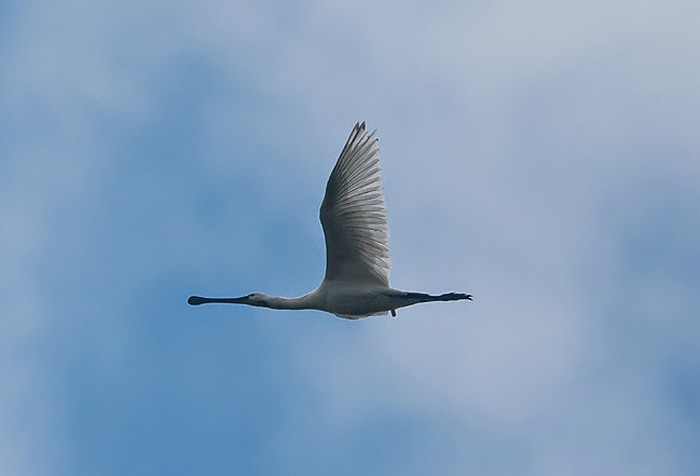
The six Common Cranes that seemed to shift from East Yorkshire to Norfolk last week remained in the East Anglian county until 22nd, seen over Attlebridge and then East Dereham during the morning of that date. The Broadland flock mustered a dozen birds on 22nd while two were seen in west Norfolk, at Narborough on 23rd. Three Cranes were reported over Thistleton (Lancashire) on 23rd and a singleton was near Askern (South Yorkshire) on 26th. The largest gathering was again near Guyhirn (Cambridgeshire), 14 there on 26th.
Late ‘crakes this week included a Corncrake flushed on St. Martin’s (Scilly) on 23rd while one of the two Spotted Crakes found over the past seven days was also on Scilly, near Higher Moors on St. Mary’s on 26th, with the other one appearing the previous day on North Ronaldsay (Orkney).
First up a species that would, ordinarily, get top billing somewhere amongst the Headliners (as it, rightly so, did last week). However, without wishing to sully the clean lines of a wave of Nearctic passerines, there’s a mini demotion for the Lunan Bay Black Scoter, the drake seen again there on 24th-26th.
The start of the review period saw Spurn’s fifth Surf Scoter, a fine drake, fly south past the seawatching hut just after 8.30am on 23rd. It was only a matter of when, not if, it would be seen further down the east coast and, after being relocated in Norfolk’s Holkham Bay during the afternoon, it transpired that it had flown past Holme at around 11am (at a speed then of, roughly, 20 miles an hour).

Despite being in the company of just a handful of Commons, the second-winter Surfie showed reasonably well (generally) through until 28th. Another drake was noted in Norfolk this week, flying past Caister on 26th and a female was seen close inshore off St. Mary’s Island (Northumberland) on 24th, while a further drake was reported from Lunan Bay (Angus) on 28th.
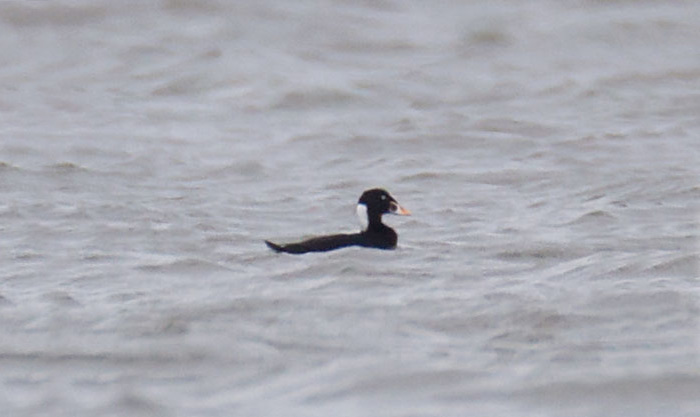
Elsewhere in Seaduck Corner, an eclipse drake King Eider was found off Nairn (Moray) on 22nd, where it remained to the following day.
Back on dry land, and not too far away from the north Norfolk Scoter was one of the more entertaining, albeit rather more tepidly received, bits of news to spring out of East Anglia this week ~ that being the discovery of a Lesser Canada Goose (the distinctive form parvipes) amongst a modest flock of Pink-footed Geese adjacent to Lady Ann’s Drive, Holkham at lunchtime on 23rd.
The bird remained in the field for a few minutes before heading off to a recently pulled beet field within the nearby estate ~ nibbling and munching and snoozing here for a while before heading back to Lady Ann’s.
Seasoned Norfolk birders will argue until the cows come home that a vagrant Canada remains one of the top prizes in county birding during the late autumn and winter, and this week’s parvipes is the first in Norfolk for a decade (a late September bird present in the same area in 2004 being the most recent county record).
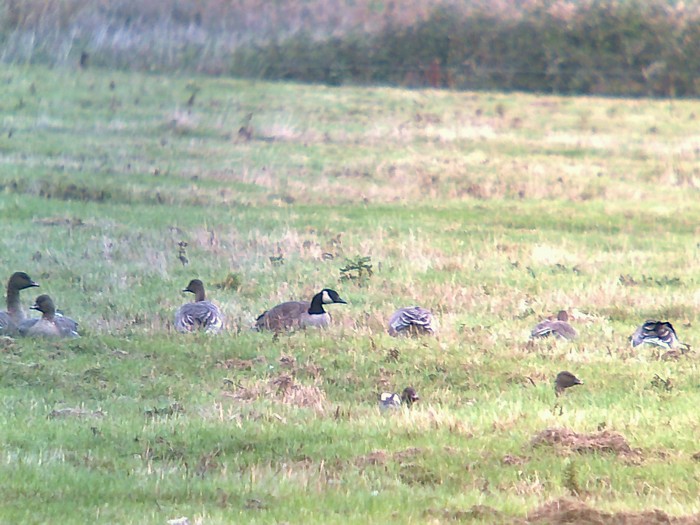
Subsequent vagrant “white-cheeked geese” seen in Norfolk have related entirely to the rather more dinky Richardson Canada Goose ~ the form hutchinsii (sometimes, to the confusion of many, listed as a Richardson Cackling Goose) ~ one present in Jaunary 2006, again at Holkham, the contentious (in terms of origin) bird at Cley in the winter of 2012/’13 (where is it now neigh-sayers?) and last February’s bird, with the Pinks, on the marshes at North Wootton.
The only Richardson Cackling Goose ~ let’s go with that this week, it sounds rarer ~ was noted again on Islay, at Loch Indaal, on 26th.
Black Brants remained at The Naze (Essex), Ferrybridge (Dorset) and around the Easington and Kilnsea areas of East Yorkshire for much of the week while a bird reported from Burnham Overy Marshes on 23rd was slpa-bang in the middle of where a particularly impressive hybrid has been present for several recent winters.
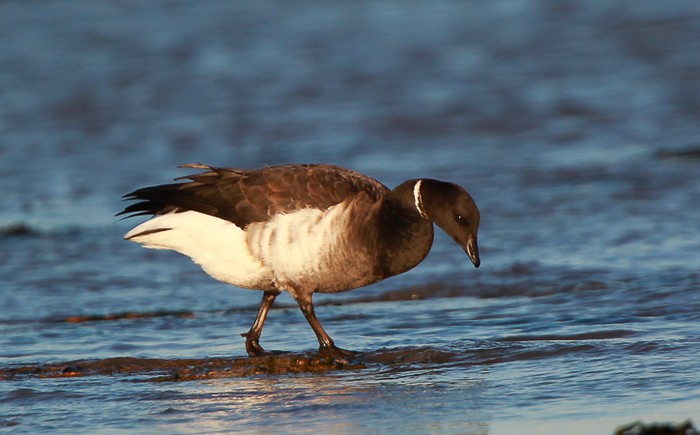
Two of last week’s Snow Geese, the pair of intermediate birds remained at Loch of Skene (Aberdeenshire) to 24th while in the north of Ireland, a blue bird was amongst the Greylags at Portaferry (Co. Down) on 25th.
The nasal saddled first-for-Powys drake Lesser Scaup was still on Llangorse Lake to 27th and was one of five noted throughout the week, all of them in the Celtic nations.
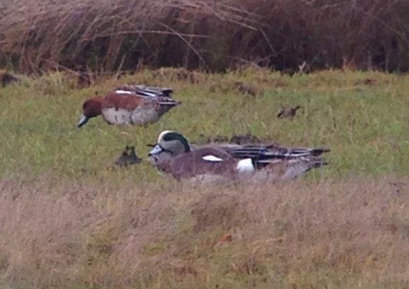
Two birds were in Argyll & Bute, a female was found on Ardnave Loch, Islay on 23rd while the juvenile remained on Loch a’Phuill, Tiree to 25th (with a young Ring-necked Duck there the same day, followed by two on 28th) while a drake was seen again on Kerry’s Lough Gill on 22nd. Last but not least, the wintering adult drake still at Cardiff Bay Wetlands (Glamorgan) to 24th at least.
Aside from the new arrivals on Tiree, the only other “fresh” Ring-necked Duck was found in County Donegal, at Fintown on 27th. Otherwise it was two leftovers from previous weeks ~ the drake on Rutland Water (Leicestershire) and the juvenile at Drift Reservoir (Cornwall), present to 27th and 28th respectively.
Three of the week’s six drake Green-winged Teals were new to the review and all of them found on 26th ~ at Hesketh (Lancashire), North Ronaldsay (Orkney) and Foula (Shetland). Also new was one on Loch Gruinart, Islay on 28th while, elsewhere, singles remained at Caerlaverock (Dumfries & Galloway) and on the Great Pool, Tresco (Scilly), the latter location also hosting a pair of first-winter American Wigeons, found on 23rd, they remained to 28th.
Last week’s first-winter drake American Wigeon was on North Ronaldsay to 22nd and soon-to-winter males were still at Udale Bay (Highland) on 26th and the Culdaff Estuary (Co. Donegal) on 27th.
In County Clare, a juvenile Lesser Yellowlegs in Poulnasherry Bay was new on 27th ~ the first on the county since a spring bird was photographed on pools near Kilbaha in May 2011 and only the fifth record to date. The juvenile that appeared last week on the Hayle Estuary (Cornwall) remained to 27th while the long-staying individual around Dublin’s Rogerstown Estuary was also on station to the same date.
New White-rumped Sandpipers were noted in Tresco’s Pentle Bay on 24th and on the Outer Hebrides, on the machair near the Butt of Lewis on 27th, while the first Spotted Sandpiper for Aberdeenshire, the juvenile found last week at Inverallochy was on station to 26th at least.
In Ireland, the juvenile American Golden Plovers remained at Aillebrack, in Connemara (on the border of Galway and Mayo) to 24th and the lingering young bird seemed in little hurry to depart the old runways at Davidstow (Cornwall) ~ present there throughout the week.
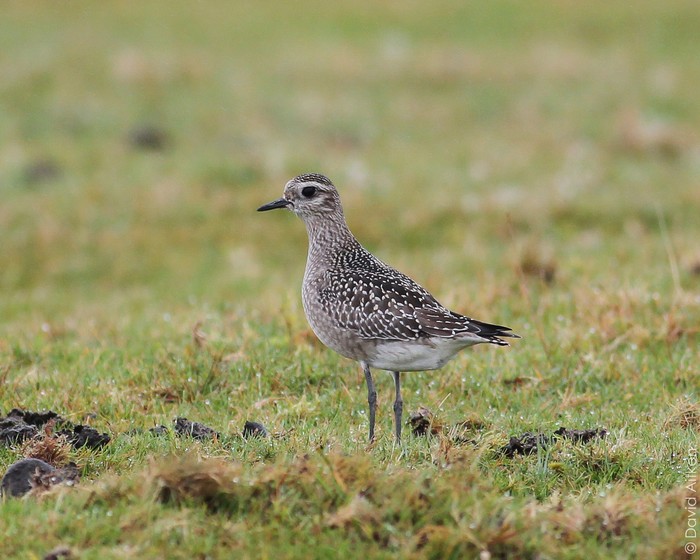
Numbers of Pectoral Sandpipers tumbled away to just three birds this week, a second bird appearing at Loch Gruinart, Islay (Argyll & Bute) on 22nd, with both birds on site to 24th, while one was new to Cumbria’s Walney Island between 24th-26th.
Normally, a fly-by English Forster’s Tern would merit a rather more elevated status but given the crazy scenes where Nearctic landbirds are concerned, this week’s exciting find gets bumped down the list a bit.
The bird was seen flying south past Cape Cornwall on the afternoon of 22nd, the seventh record for Kernow and the first there for 12 years. Previous records include Britain’s first, seen off Swanpool and throughout Falmouth Bay in the later winter of 1980 and was followed by further 80’s singles in 1982 (my first major dip ~ ouch!) and 1987, with two through the 90’s, (in 1990 itself and then 1995) with the 2002 individual spending 11 days on the Hayle Estuary from November 25th.
Ireland has been the staple location for Forster’s Tern across the past 10 to 15 years, with returning birds or wintering birds appearing in 10 coastal counties with the old hands in Galway Bay and the recent returnee in Louth being the more favoured options.
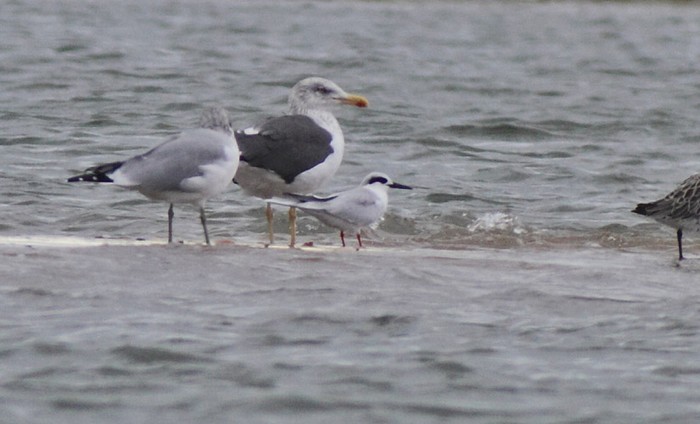
British birds within the same time frame are limited indeed ~ the already mentioned Hayle bird was perhaps many folk’s best opportunity back in 2002, while other stayers in the last 14 years have included a second-winter in north Wales, at Bangor, between December 2nd-18th 2000 and a first-winter in Oban Bay between January 8th-11th 2003.
A one day bird in west Wales (on the Gann Estuary, also in December 2000) wasn’t on offer, so we go back a little further to the remrakable “lost” bird in Essex, present firstly at Hanford Water, then (loosely) around the Tollesbury Marshes off and on between November 1998 and April 2000.
As mentioned above, Forster’s Tern records have been dominated by Ireland over the past decade and this week saw the continuing presence of an adult on the east coast, present around the Rogerstown Estuary and then Rush (Co. Dublin) from 24th-28th.
In East Sussex, the late-departing moulting adult White-winged Black Tern was at Rye Harbour NR until 28th.
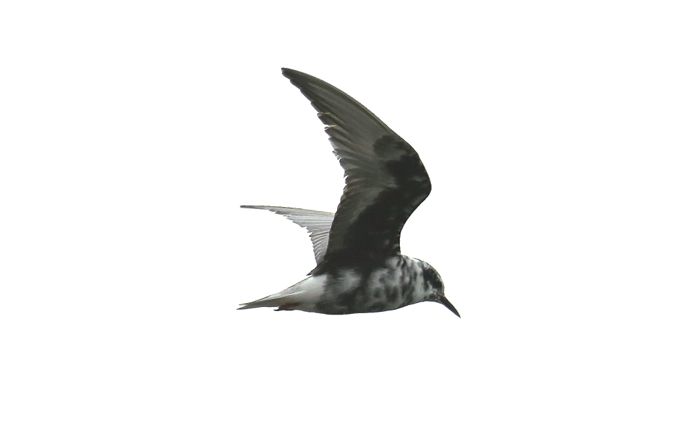
Coming as a little bit of a surprise this week was the reappearance of the adult Franklin’s Gull at Blashford Lakes HWT (Hampshire). The bird was initially seen briefly on October 19th, so a nine-day absence comes as something of a surprise, even for such a nomadic species.
Actually, the behaviour of this second-ever Franklin’s Gull for the county mirrors that of the individual seen in east and north Norfolk in August (seen on only three dates, at two sites in the space of a fortnight). It couldn’t be one-in-the-same could it?
Back again for a fourth autumn along the south Devon coast was the adult Bonaparte’s Gull ~ first seen off Dawlish Warren NNR in the middle of the month, it was seen off Teignmouth on 19th and again at Dawlish on 22nd.
It was very much a case of the old and the new for Ring-billed Gull ~ a first-winter was seen heading past Ardvule Point, South Uist on 22nd will be barely five or six months old, likewise the bird at on the beach at Kilkee (Co. Clare) on 25th, while the newly returned adult at Walpole Lake, Gosport (Hampshire) ~ back on 26th ~ is at least 13 years old, appearing first (as an adult) in November 2003.
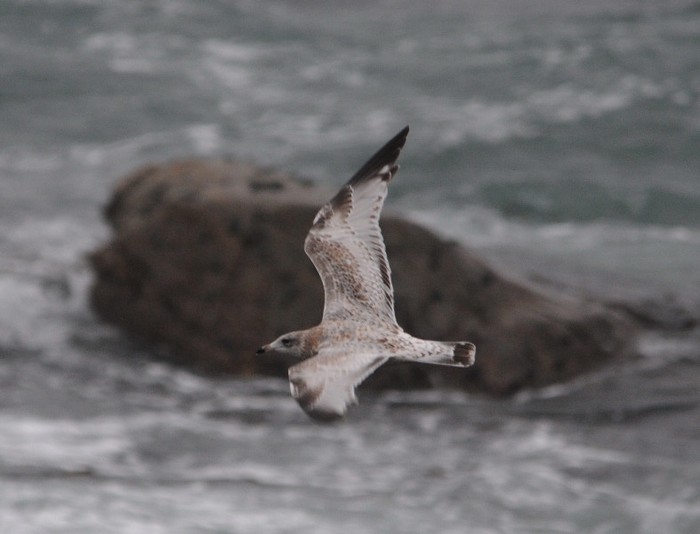
The week’s other three Ringos were all in Ireland, a second=-winter was seen at Killarney’s Ross Castle (Co. Kerry) on 24th while the adult still at Portrush (Co. Antrim) on 25th and a near-adult was at Bray (Co. Wicklow) on 28th.
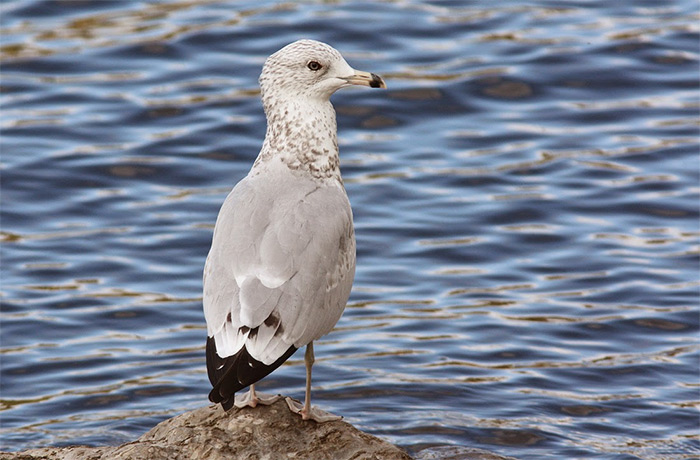
Juvenile Glaucous Gulls started the week off on Shetland, on Fair Isle and in Antrim, at Dunseverick harbour and were followed by singles at Marwick, Mainland (Orkney) and Salen (Highland) on 23rd, at Nosterfield (North Yorkshire) and both Nesting and Norwick, Unst (Shetland) on 26th and Flamborough Head (East Yorkshire) on 27th.
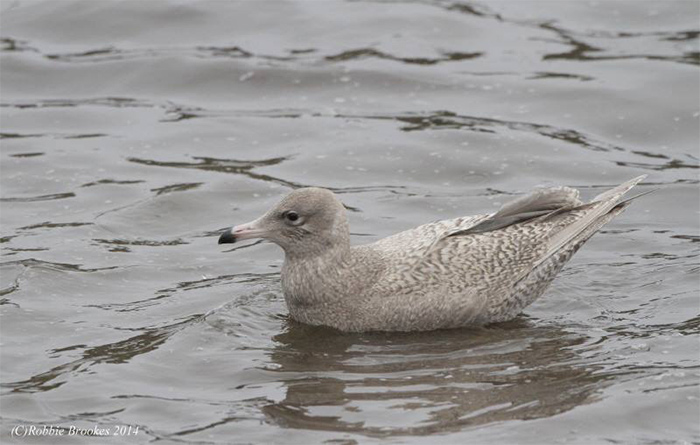
Numbers of Iceland Gulls also took a turn for the better this week, at least 13 recorded, almost all of them juveniles. Two birds were seen on 22nd, on Fair Isle and the Bann Estuary (Co. Derry), while the four birds found on 24th were split evenily between the Outer Hebrides (one for North Uist, one for Barra) and Orkney (two for North Ronaldsay).

One or two youngsters were noted from Malin Head (Co. Donegal) between 25th-27th, with up to five more seen on Shetland in the same timeframe ~ one at Virkie, one or two on Yell and two at Westing, Unst. The final bird of the week was seen at Broadford Bay, Isle of Skye (Highland) on 27th.
In Kerry, an Azorean Yellow-legged Gull first seen last week in Dingle Harbour remained there to 25th, while there was no sign of the excellent looking contender for the same form noted last week at Stanwick (Northamptonshire) on 21st.
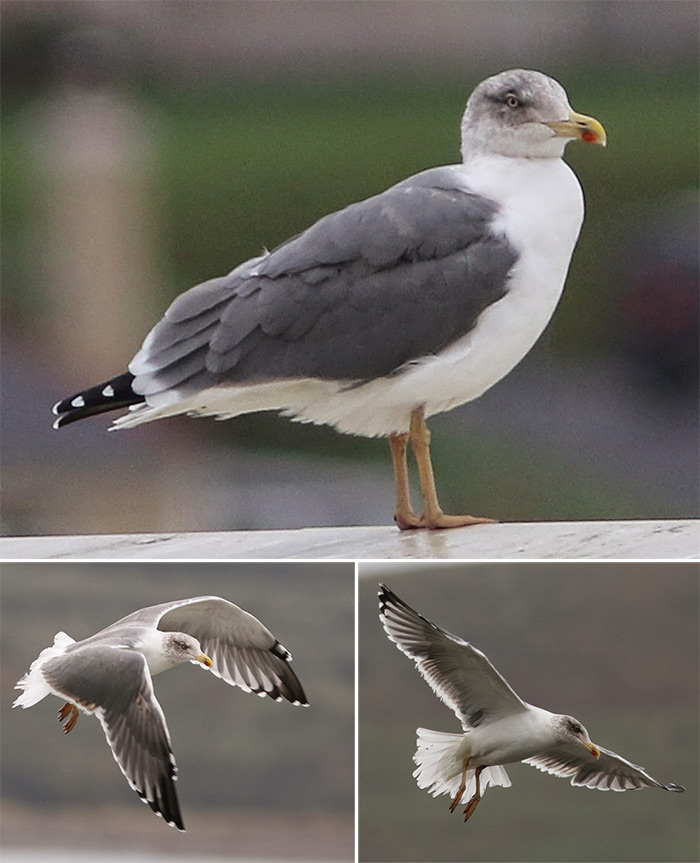
Normally the announcement of an Eleonora’s Falcon would catipult it to the very top of the Headliners, but this week, given that fabulous headrush of American landbirds, this toughest of the toughest to connect with mega is relegated to a cameo appearance in Raptorsville..
This week’s understated bird, an intermediate adult, was seen over Bullock’s Fishing Lake, near Kingston Seymour, near Clevedon (Somerset) on 25th, heading away within a minute or so as the clock ticked around to 11.45. It transpired that all three observers are familiar with the species but won’t be taking the record further (hence another good reason not to sully the Americana-heavy set of lead birds).
Barely a summer or autumn goes by without a report from somewhere or other of this particular species, but the record book is the true reflection of just how rare this southern falcon remains here ~ still only seven accepted to date, since the first at Formby (Lancashire) for two days in August 1977.
A freshly dead bird was picked up at Easington (East Yorkshire), also in late October (in 1981) and further records in the 80’s were a male in June 1985 on South Uist and the first-summer over Hickling Broad in July 1986.
The second accepted October record came over Reydon (Suffolk) on the 3rd of the month in 2003, and two photographed birds have followed ~ over Maldon (Essex) in September 2008 and, most recently, at Porthgwarra in August 2012.
Elsewhere in Somerset, a rather more linger-y juvenile Pallid Harrier was an exciting find at the Steart WWT reserve on 22nd, and after a blank day on 23rd, the 24th saw the bird reappear again heading back towards the local marshes where it showed, infrequently, to 28th .
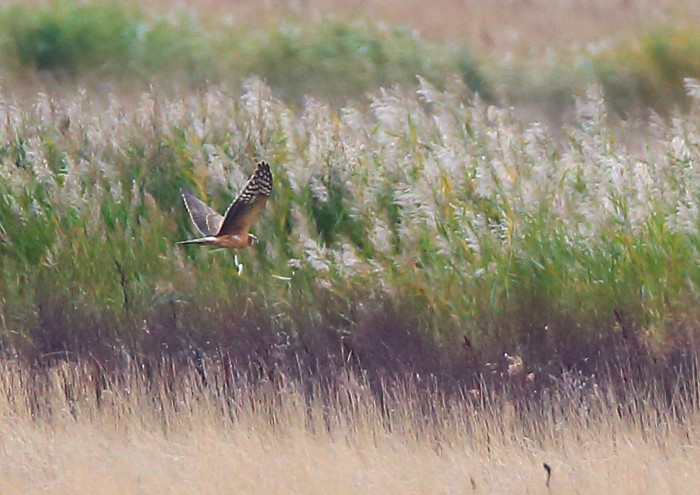
To date, Somerset has hosted this always alluring raptor on one previous occasion, a juvenile finding its way to southwest England during the invasion year of 2011, spending 19 days around the Black Down area of the county. Records elsewhere around the far southwest include a single record for Dorset, two for Cornwall with four on Scilly.
After a big turn out last week (a massive 60+ reported…) this week was another strong week for Rough-legged Buzzards, with up to 46 birds noted in 15 counties.
Norfolk stole the honours with as many as a dozen logged across the county, with an unprecedented five seen from around Breydon Water on 25th. One or two (minimum) were reported from the west end of Holkham and Burnham Overy area, while a presumed returning bird was back in the Waveney Forest from 22nd.
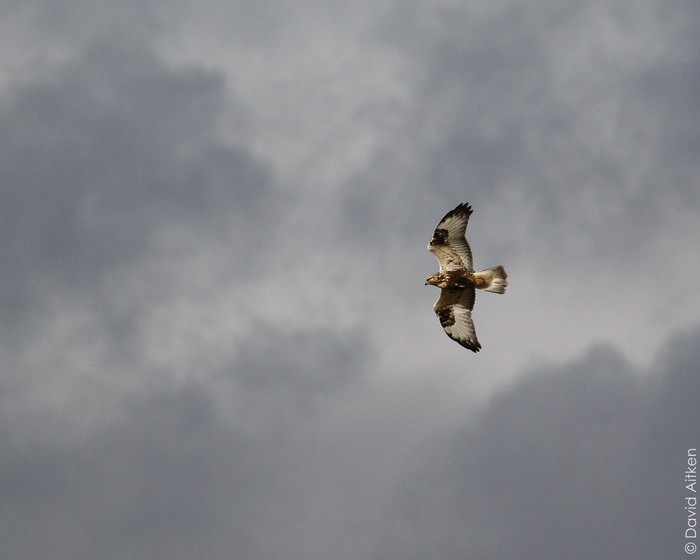
Up to 19 birds were seen across the northeast of England, with four a piece for East and North Yorkshire, including a very obliging bird at Bridlington from 24th-28th. Lincolnshire birders logged at least three individuals, while South Yorkshire, Durham and Northumberland all registered two each, with a singleton in Cleveland.
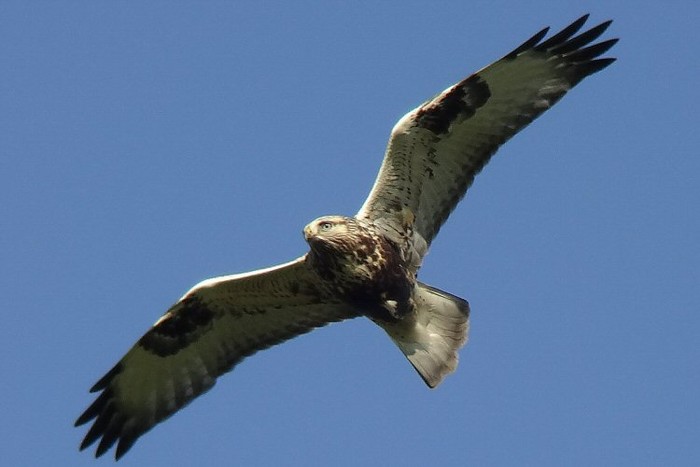
Up to three Rough-legs were seen in Essex, including the juvenile still around Wallasea Island on 23rd and 25th-28th, while further singles were noted from Kent and Nottinghamshire through to Cheshire, Cumbria and Shetland.
There’s no denying that as the weather started to ease post Gonzalo’s Thursday and the run of idle southwest winds kicked in, there was little to raise the spirits of those hoping for a few tasty morsels to appear on the late October scarcities plate…
It was all a little bit samey (as you’d expect really) only with fewer bits and bobs to choose from.
Arguably the most striking passerine of the week, certainly one of the more beautiful ones, was the obliging full on-adult male Red-breasted Flycatcher found around the old trapping area at Beachy Head (East Sussex) on 23rd, remaining in all his tango-toned beauty to 28th.
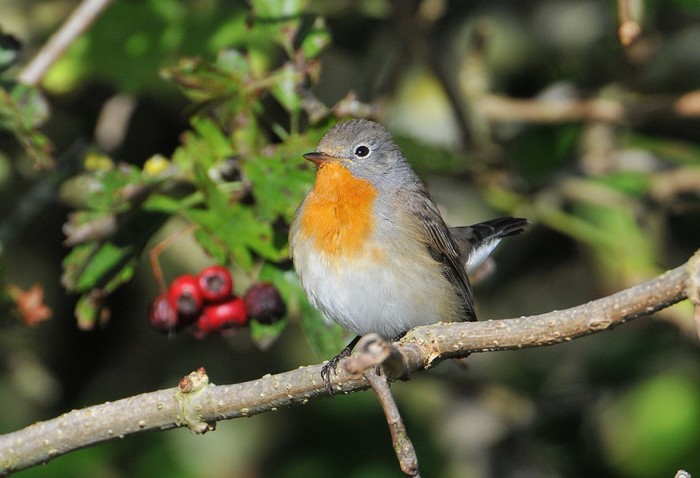
Adult males aren’t overly frequent here, there’ve been two or three this autumn (out of nigh-on 300 in all) for instance, and this week’s bird has been particularly well received.
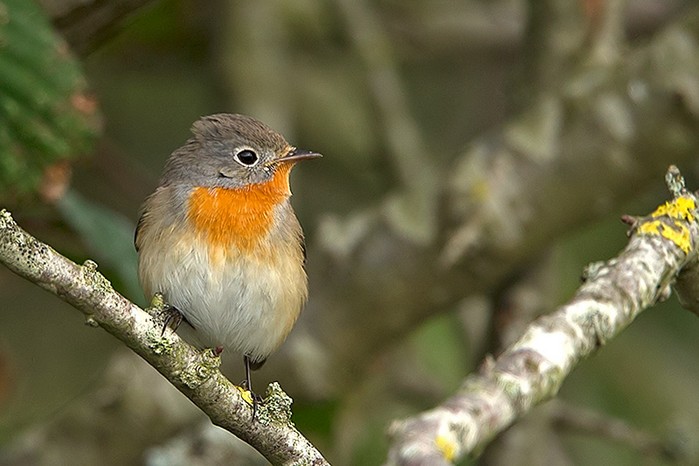
And rightly so. He’s an absolute cracker!
Elsewhere around the country, further singles were noted on Scilly, on Tresco on 23rd-25th and St. Mary’s on 25th and 27th, while in Shetland, three birds were seen on 24th, two for Mainland, at Gulberwick and Tresta, with another also on Fair Isle, while the 25th saw two arrive in Nanquidno valley (Cornwall). The final birds of the week were on Portland (Dorset) on 27th and Lundy (Devon) on 28th.
The continuing lack of further Taiga Flycatchers has also been duly noted, despite a decent spread of eastern vagrants this autumn ~ we’ve had none since on Shetland in 2009 (although there’s still a Cornish record going the rounds) and there have only three records to date full stop (the others both appearing in 2003 ~ one spring, one autumn).
After a cold front pushed across Ireland and northern Britain overnight on 27th-28th bringing a push of common Scandinavian species in behind them it felt as though there may be something better caught up in what could be one final autumnal push from the northeast…and sure enough, up popped a Red-flanked Bluetail on the far flung Mullet Peninsula, in the pines at Blacksod.
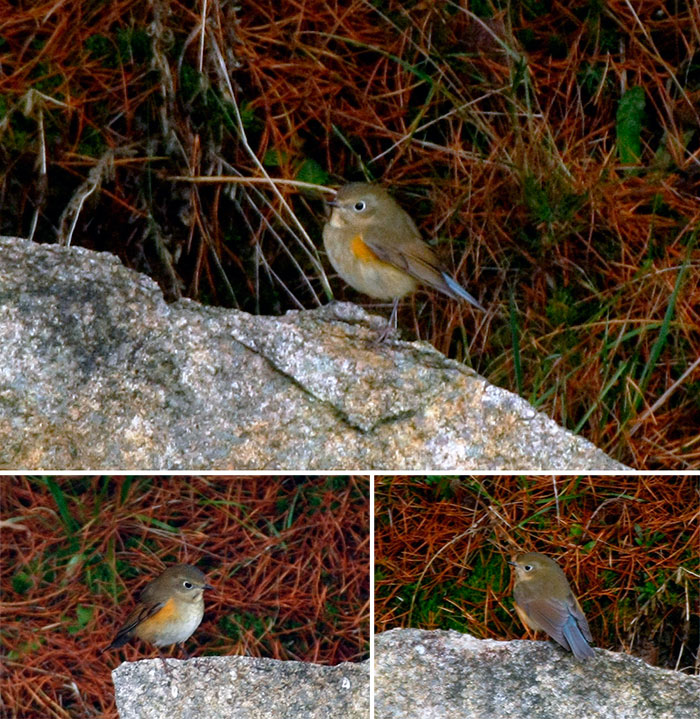
A superb find, it becomes the first for Mayo and the first in Ireland to be seen away from Cork, which has hosted the three previous records to date. The beautiful Bluetail is only a very recent addition to the Irish list, the first was found on Dursey Island on November 10th 2009 and was followed by a one-day bird on Cape Clear Island on October 12th 2010 and another one day bird, this one on the mainland, at Galley Head, on October 26th 2012.
Next up, another discovery for the 28th ~ and one that I’d just written about and predicted for any day next week ~ damn, too good for my own good… :o) ~ a fine male Desert Wheatear on Skomer (Pembrokeshire), becoming the fourth record for the west Wales county, and the second for the island, after a firstw-inter male was seen there in November 2011. The previous county records came from nearby Skokholm, in November 2003 and December 1997.
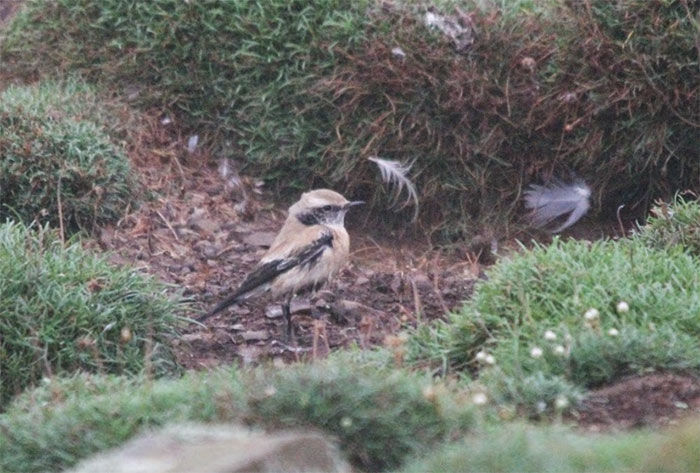
One of only two Siberian Stonechats through the past week was the still-present bird at Titchfield Haven NNR (Hampshire), on site to 28th, with the second appearing in west Cornwall, at Porthgwarra on 27th. The sole Bluethroat was logged as still-present on the Shetland Mainland, at Levenwick, to 27th.
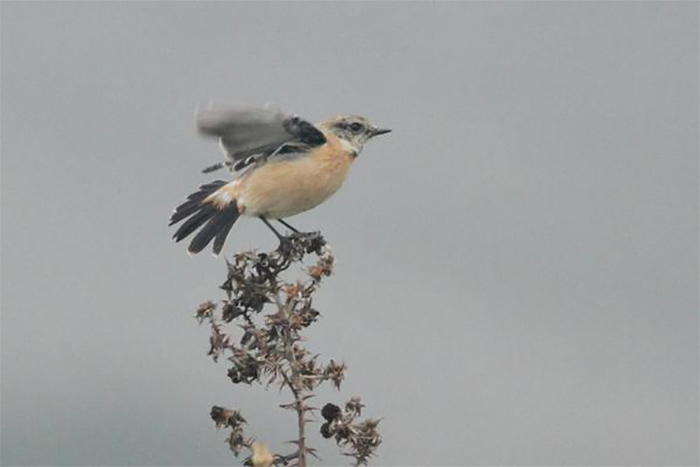
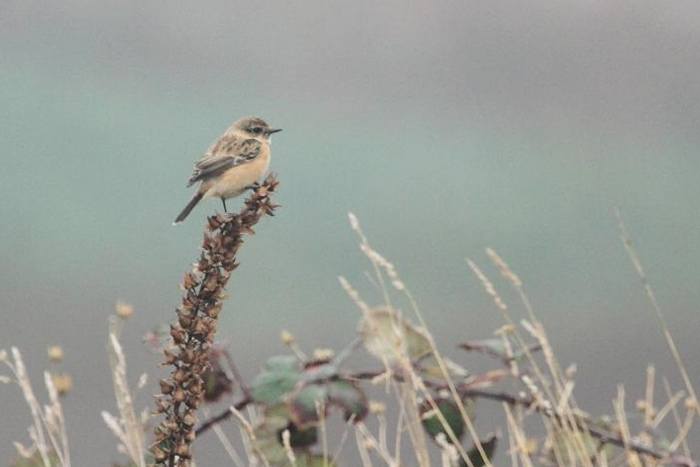
Two late Ortolans were found in the far southwest of England as the new review period began ~ one was with finches in the stubble fields at Soar (Devon) on 22nd and the following day saw another arrive at Troy Town, St. Agnes (Scilly) where it lingered through to 28th (where it was duly captured nicely in an educational image by Jim Almond).
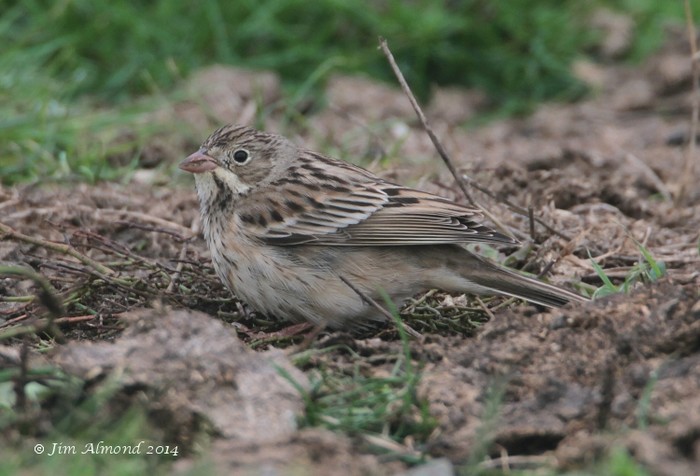
Two Little Buntings started the week off on Fair Isle, with one remaining to 24th at least, while a third Shetland bird was on Out Skerries on 23rd. There were three records on the British mainland, a brief bird was noted at West Bay, Bridport (Dorset) on 22nd, one was at Polgigga (Cornwall) on 27th and another brief one was at Beachy Head (East Sussex) on 28th.
In northeast England, Sunderland’s super-showy Olive-backed Pipit remained at Roker Park until 22nd, with the same date producing yet another for Shetland, this one seen at Swinister Burn, near Sandwick, Mainland. The 24th saw a new bird arrive on Scilly, seen around Castella Down, St. Agnes, while back on Shetland, one remained on Fair Isle to the same date and a second new bird was found at Mid Yell on 26th. Also new was an Olive-backed Pipit on Papa Westray (Orkney) on 27th.
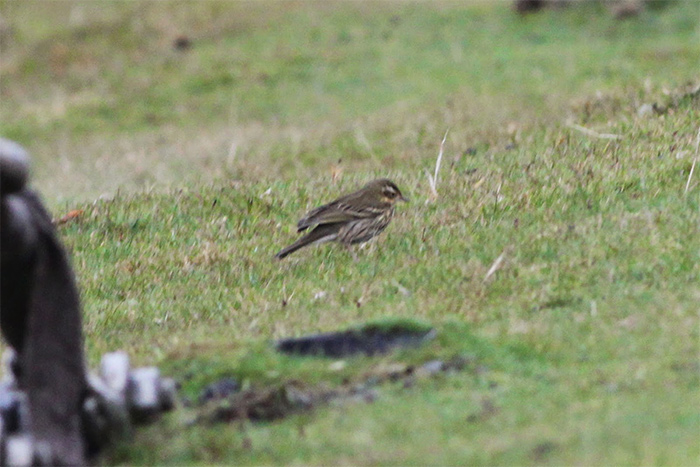
The week’s solitary Red-throated Pipit was seen on St. Mary’s Airfield (Scilly) on 26th where three Short-toed Larks were again present the same date (with singles seen at three different sites on the island the following day). The fourth of the week was found on Oronsay (Argyll & Bute) on 23rd, an impressive record for the far northwest.
Five of the week’s nine Richard’s Pipits were found on 25th ~ first was one at Painswick (Gloucestershire) and it was followed by birds on Fair Isle (Shetland), St. Agnes (Scilly), Cloughton (North Yorkshire) and Abbotsbury and East Fleet (Dorset). The final four birds were found inland near Chippenham Fen NR (Cambridgeshire) on 26th, at Middle Wallop (Hampshire) on 27th and Hemsby (Norfolk) and North Ronaldsay (Orkney) on 28th.
A new Cornish Radde’s Warbler was the pick of the warblers this week ~ found in the lovely Kenidjack valley on 26th it becomes the first in the county since a brief bird in the nearby Cot Valley in October 2010 and a more obliging bird along the coast at St. Levan in October and November 2009. The second Radde’s Warbler of the week was also found at the southwestern end of England, over on Bryher (Scilly) on 28th.
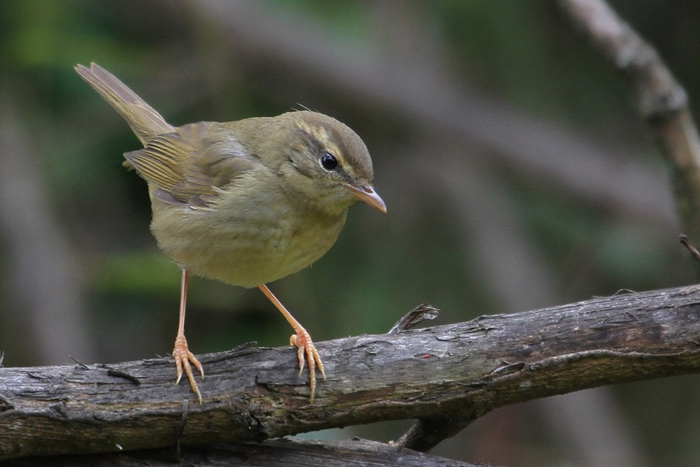
In Scotland, Lothian’s first-ever Booted Warbler remained at Torness Point until 23rd, heading off to pastures new it seems while further north, on Shetland, the one-and-only Hume’s Yellow-browed Warbler of the autumn so far remained in gardens at Voe until 23rd.
There was also just one Pallas’s Warbler this week too ~ found on the final day of the review period, at Church Norton (West Sussex).
After two extremely strong showings for Yellow-browed Warbler (420 two weeks ago and some 355 last week), the past seven days have seen an expected tailing off in numbers and also the expected drift towards the southwest.
Around 118 birds were reported this week, from 24 counties with over half of those birds counted through the southwest of England, over 60 noted from Dorset to Scilly ~ the former registering at least 17, the latter 24 (both minimum figures), with 14 for Cornwall and nine for Devon. Around 17 birds were logged in the southeast, including half a dozen in Hampshire and two inland at Amwell (Hertfordshire) on 22nd.
Five of East Anglia’s eight birds were seen in Norfolk and one was seen in Cambridge on 24th and half a dozen appeared in the northeast. Seven birds made it to Wales, including four in Glamorgan, while Scotland recorded nine in all (four of them on Shetland), while four were in Ireland.
With the clock ticking down to the next phase of autumn, the number of Barred Warblers fell away to a genteel six birds this week ~ one spent 23rd-24th at Fife Ness, a second appeared on St. Mary’s (Scilly) on 25th with new birds rounding things off on Skomer (Pembrokeshire) on 26th, at Hauxley NR (Northumberland) on 27th and Bardsey Island (Gwynedd) and Hook Head (Co. Wexford) on 28th.
After a hefty monochrome wave of the always welcome Great Grey Shrike last week (at least 50 recorded), numbers this week didn’t fall to sharply across the past seven days, some 23 reported from 16 counties.

Leading the way the four birds seen around North Yorkshire’s Langdale Forest on 25th, with two birds each in Suffolk (at Cavenham Heath and Boyton), Buckinghamshire (at Amersham and Caldecotte), Kent (at Seasalter and Chilham) and Hampshire (at Woolmer Pond and Iblsey Common in the New Forest).
Further singles were seen from West Sussex, through the Home Counties, Wales, the Midlands, South and East Yorkshire and on up to Shetland, where one was seen on Fair Isle on 22nd-24th.
As with so many other species this week, there was another fall in numbers for Red-backed Shrikes ~ two noted across the week, one was found on St. Mary’s (Scilly) from 25th-27th with the long-staying bird present in Suffolk, at Lowestoft’s Ness Point throughout the week.
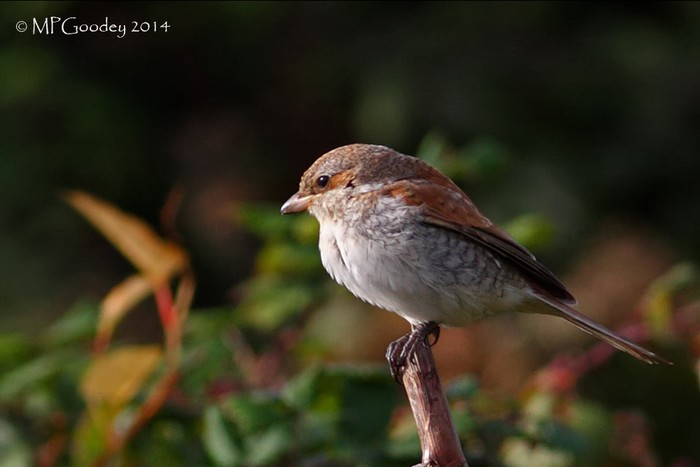
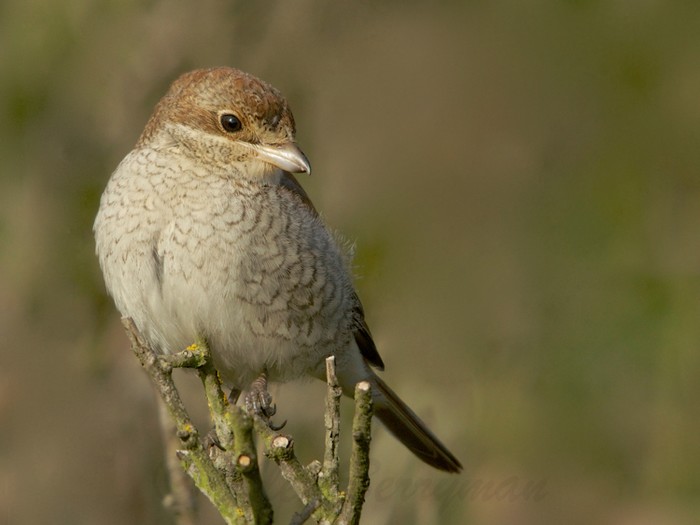
Wrynecks tailed off to a typical late October twosome this week, seen at Prussia Cove (Cornwall) on 23rd and still on Skomer Island (Pembrokeshire) to 24th. There were also two Hoopoes noted this week, both located on 25th ~ the first arrived on the Suffolk coast, at Kessingland (where it remained to 27th which included a brief outing to nearby Benacre Pits on 26th) while the second was found at Keldabister Farm on Bressay (Shetland).
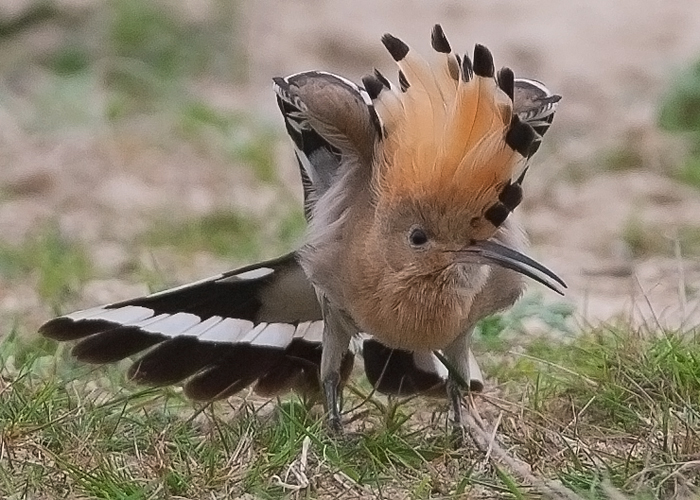
The week’s five juvenile Rose-coloured Starlings included two in southwestern England, on St. Mary’s (Scilly) and Penzance (Cornwall) to 25th and 28th respectively, with last week’s bird at Voe, Mainland (Shetland) lingering to 24th with the only new individuals being discovered on Tiree (Argyll & Bute) on 25th, where it remained to 27th and in Leven (Fife) on 26th, the first county record for three years.
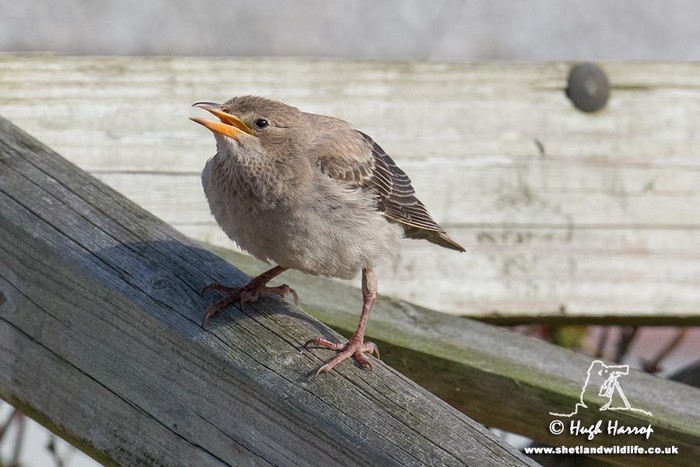
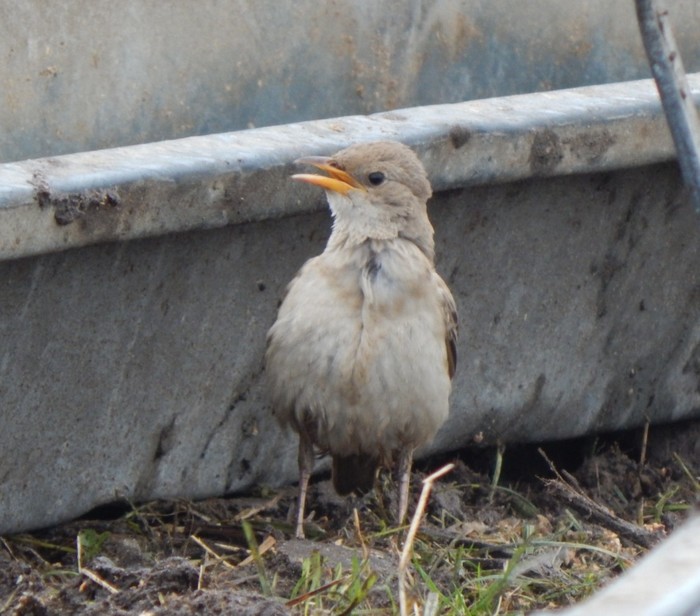
The weekend saw three Penduline Tits appear along the Suffolk coast ~ the first was found in an area with no public access at Botany Bay, Snape and was followed by two birds from Minsmere’s Island Mere, all of them seen on 25th.
Finally, to the single Waxwing of the last seven days which was reported heading over Burwell Fen (Cambridgeshire) on 26th.
The week ahead appears to have the potential for a waif and stray from the east or northeast as the new review begins, the briefest puff of east and northeast winds making themselves known down the east coast but we then seem to be back in the throws of very warm, mild air that will push away the latest cold front as the weekend approaches…
That returning southerly air (early November temperatures may top 20 degrees C) surely means a push of late Red-rumped Swallows and Pallid Swifts is on the cards, but what about another November Little Swift? There have been three to date, the most recent coming to Cromer in 2005.
The weather may also provide good transit for Desert Wheatears the week ahead has yielded no fewer than 15 in all and it would seem like a decent bet that we may see the first of the year appear in the next few days ~ it has already I know, but I’m not changing this now…!
After that, well, that’s where the guessing begins…
Desert Warbler has sprung to mind, quite why I’ve no idea, and the chance of a late Isabelline Wheatear is at the back of the mind, likewise, for some reason, Crested Lark.
There’s a touch more Atlantic weather in the offing, but its days away yet but, if anything comes of it, perhaps someone will unearth the autumn’s first Buff-bellied Pipit or how about a lovely, plump American Robin…
Mark Golley
29 Oct 2014
Many thanks to the rest of our contributors for their photos videos too, we really appreciate your support.
Contributors websites
Check out our contributors website for more great photos and news







